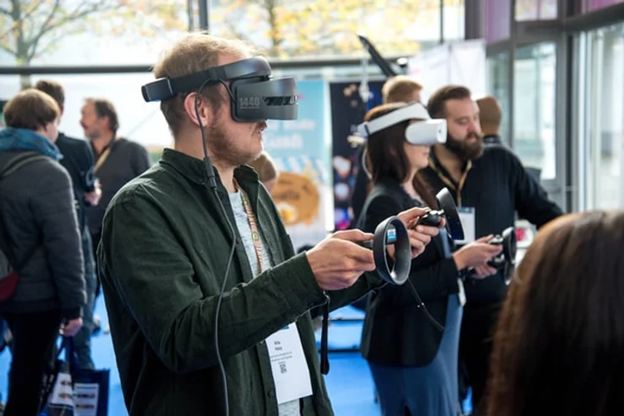More than a Game: Virtual Reality as a Tool for Climate Change Mitigation

Despite skepticism about the virtues of technology, it can serve beneficial purposes with the right intentions and thoughtful implementation. Virtual and mixed reality (XR) are tools that can potentially help combat climate change by reducing inefficiencies and persuading individuals to care about the environment.
XR can serve as a practice run for reality to devise ways to increase efficiency and reduce environmental impact. The technology can train people to be more efficient producers, reduce transportation-related emissions, create prototypes and collaborate. For example, an architect in China can use XR to walk through a building project in America without flying across the world. That same architect can also learn where the natural lighting is low before the building is even constructed.
Of the thousands of possibilities of XR, reducing cost and increasing efficiency are the best motivators for adoption to reduce waste and harmful emissions. By cutting down on unnecessary processes, XR could help all industries reduce their environmental impact. SEAT in Spain was able to reduce prototyping by 50% with the help of XR, according to a report from ECORYS. Less physical prototyping means less physical waste and faster production — cutting out all the negatives of physical product development.
Additionally, XR has the potential to help people empathize with the plight of nature. One of the main reasons for inaction against climate change is the difference in perceived effects and actual effects. There is a cognitive block between the impact of our actions and the scale of the problem. Many individuals in the developed world are only beginning to see the consequences of climate change, and some still think it won’t affect them. However, planetary changes are escalating, and if the global population doesn’t accept the new reality, the window of opportunity to act may close for humanity.
[Like what you read in The Carbonic? Help support climate journalism by donating ]
Virtual reality is not only for video games and fantastical escape; it can inspire change. Developers are creating VR simulations that individuals can experience to learn more about the physical effects of climate change. VR can show us what the Earth may look like if we do not mitigate climate change, from watching a rainforest burn to seeing a barren wasteland. Olfactory Virtual Reality technology or OVR has even created VR simulations that include smell, Axios reported. For example, seeing a forest fire in VR may sway some hearts; smelling the burning wood and smoke could drive the message home further. By creating a more sensual experience, OVR can persuade more people to believe in the threat of climate change.
XR has many applications to help mitigate climate change. XR can create cost savings, raise awareness, increase efficiency and even change habits. XR can make the production of a new car more efficient, but it can also bring us closer to nature, showing the actual effects of our actions.
References: Plein, K. (2021, October 5). More than a Game: Virtual Reality as a Tool for Climate Change Mitigation. The Carbonic. https://www.thecarbonic.com/post/more-than-a-game-virtual-reality-as-a-tool-for-climate-change-mitigation
